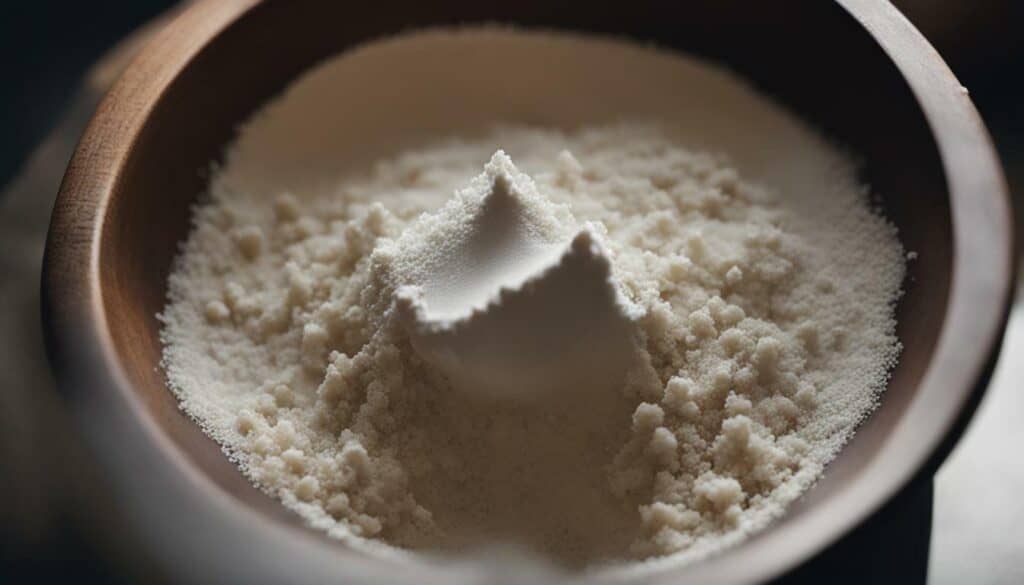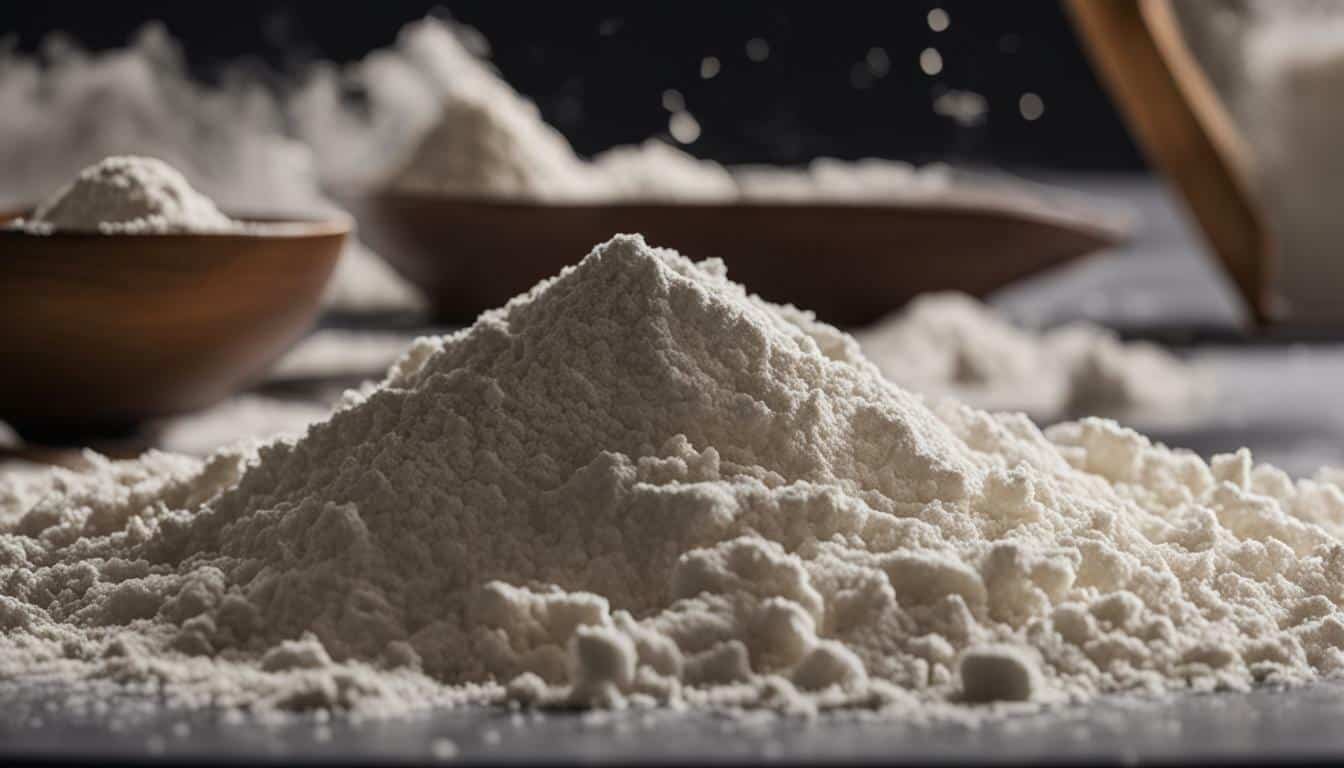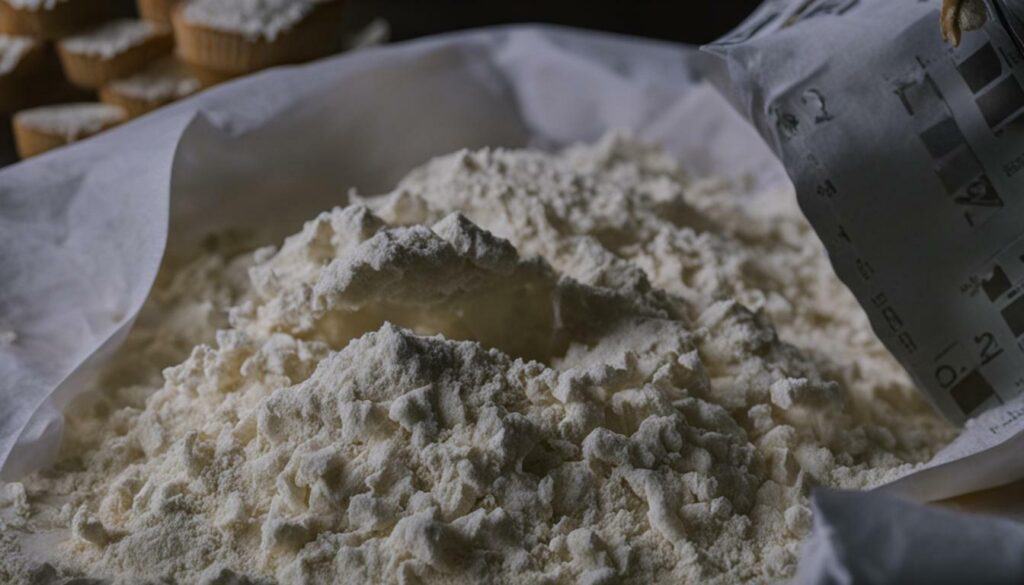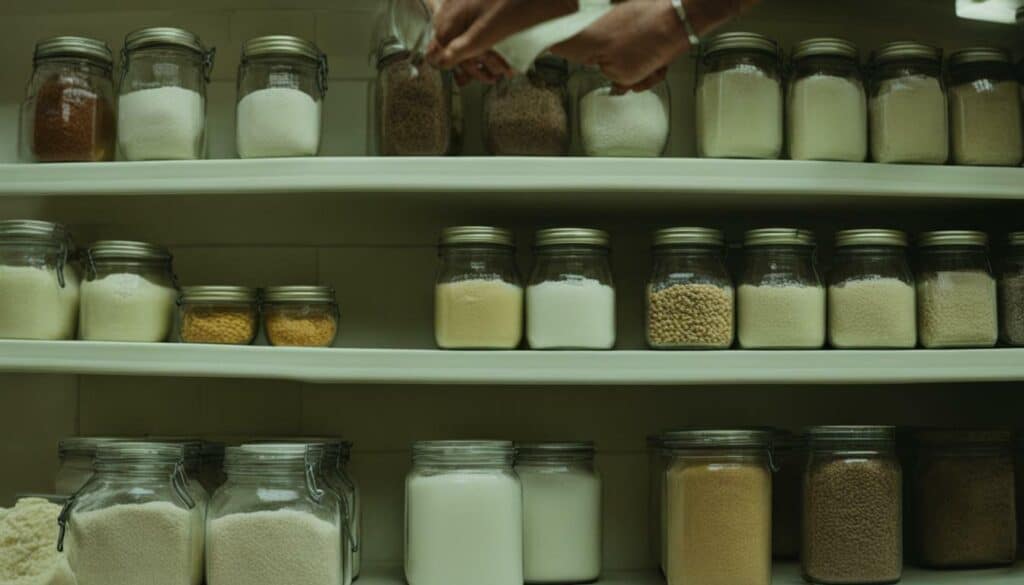Flour expiration date plays a crucial role in ensuring the quality and freshness of your baked goods. While many people believe that flour lasts forever, it actually does have an expiration date, although it may have a longer shelf life than you might think. Understanding the nuances of flour expiration can help you make the most of this essential ingredient in your baking endeavors.
- Flour has an expiration date, but it can still be used for several months past that date if stored properly.
- Different types of flour have different shelf lives, with whole grain and gluten-free flours having shorter expiration dates.
- Signs of spoiled flour include changes in color, texture, and smell, as well as the presence of insects or rodents.
- Using expired flour may affect the taste and texture of your baked goods, and self-rising flour may not provide the desired rise.
- Proper storage in an airtight container, in a cool and dry place, can help extend the shelf life of flour.
Does Flour Expire?
Many people wonder if flour actually expires or if it remains safe to use beyond the listed date. The truth is that flour does expire, but its shelf life is longer than most people think. The expiration date on the package is a recommendation from the manufacturer for the best quality, but you can typically use flour for four to six months past this date. However, it’s important to consider storage conditions as they play a significant role in the expiration of flour.
Different types of flour have different expiration dates. Whole grain flour and gluten-free flours containing nuts tend to have a shorter shelf life due to their higher fat content. All-purpose flour can last up to a year, bread flour for 4 to 6 months, cake flour for 6 months to 1 year, nut flours for 3 to 6 months, pastry flour for 6 months to 1 year, self-rising flour for 4 to 6 months, and whole wheat flour for 3 to 6 months.
To determine if flour has gone bad, look for white or cream-colored flour with a smooth, dry texture and a neutral aroma. Lumps should easily dissolve when the flour is passed through your fingers. However, gray or yellowing color, lumps due to moisture, musty or unpleasant smells, and signs of insect or rodent infestation are all indicators that the flour should be discarded.
| Type of Flour | Shelf Life |
|---|---|
| All-Purpose Flour | Up to 1 year |
| Bread Flour | 4 to 6 months |
| Cake Flour | 6 months to 1 year |
| Nut Flours | 3 to 6 months |
| Pastry Flour | 6 months to 1 year |
| Self-Rising Flour | 4 to 6 months |
| Whole Wheat Flour | 3 to 6 months |
Using expired flour is generally safe, but keep in mind that it may result in a decline in flavor and texture. Self-rising flour may not produce the desired rise in baked goods after it has expired. If you’re unsure about the quality of the flour, it’s best to discard it. You can compost it or repurpose it as an insect repellent or to polish stainless steel appliances.
Understanding Flour Shelf Life
The shelf life of flour varies depending on the type and how it is stored. Different types of flour have different expiration dates, with whole grain flour and gluten-free flours containing nuts having a shorter shelf life due to their higher fat content. All-purpose flour can last up to a year, bread flour for 4 to 6 months, cake flour for 6 months to 1 year, nut flours for 3 to 6 months, pastry flour for 6 months to 1 year, self-rising flour for 4 to 6 months, and whole wheat flour for 3 to 6 months.
To help you understand the typical lifespan of different types of flour, here is a table summarizing their estimated shelf life:
| Type of Flour | Estimated Shelf Life |
|---|---|
| All-Purpose Flour | Up to 1 year |
| Bread Flour | 4 to 6 months |
| Cake Flour | 6 months to 1 year |
| Nut Flours | 3 to 6 months |
| Pastry Flour | 6 months to 1 year |
| Self-Rising Flour | 4 to 6 months |
| Whole Wheat Flour | 3 to 6 months |
It’s important to note that these are general estimates and the actual shelf life may vary depending on factors such as storage conditions and exposure to air. Proper storage is crucial in preserving the freshness of your flour. To extend its shelf life, store flour in an airtight container in a cool, dry place. You can also freeze flour to double its lifespan.
By understanding the shelf life of different types of flour and following proper storage practices, you can ensure that your flour stays fresh for longer and that your baked goods turn out delicious every time.

Spotting the signs of spoiled flour is essential to avoid using it in your recipes. Here are some indicators that your flour might have gone bad:
- Unpleasant odor: If your flour smells musty, rancid, or off, it’s a clear sign that it has spoiled. Fresh flour should have a neutral aroma.
- Unusual color: Flour that has turned gray, yellow, or developed dark spots may not be safe to consume. Fresh flour should be white or cream-colored.
- Lumps and clumps: Moisture can cause flour to clump together. If your flour feels moist, has hard lumps, or is difficult to break apart, it’s likely spoiled.
- Pest activity: Insects or rodents can infest flour, leaving behind droppings or webs. If you notice any signs of pest activity, it’s best to discard the flour.
Regularly inspecting your flour for these signs of spoilage is important to ensure the quality and safety of your baked goods.
Image: Signs of Spoiled Flour

| Flour Type | Shelf Life |
|---|---|
| All-Purpose Flour | Up to 1 year |
| Bread Flour | 4 to 6 months |
| Cake Flour | 6 months to 1 year |
| Nut Flours | 3 to 6 months |
| Pastry Flour | 6 months to 1 year |
| Self-Rising Flour | 4 to 6 months |
| Whole Wheat Flour | 3 to 6 months |
Remember to always check the expiration date on the package and take note of the shelf life recommendations for your specific type of flour. When in doubt, trust your senses and discard any flour that shows signs of spoilage. Good quality flour is crucial for achieving the best results in your baking endeavors.
Is Expired Flour Safe to Use?
While expired flour is generally safe to use, it may affect the quality of your baked goods. The expiration date on the package is a guideline for the best quality, but you can typically use flour for four to six months beyond that date. Storage conditions play a significant role in flour expiration, as exposure to air can cause oxidation and potential spoilage.
To determine if flour has gone bad, look for white or cream-colored flour with a smooth, dry texture and a neutral aroma. When passed through your fingers, lumps should dissolve easily. Gray or yellowing color, lumps due to moisture, musty or unpleasant smells, as well as signs of insect or rodent infestation, are all indications that the flour should be discarded.
Using expired flour may result in a decline in flavor and texture in your baked goods. Self-rising flour, in particular, may not produce the desired rise after expiration. If you’re uncertain about the quality, it’s best to dispose of expired flour. You can compost it or use it as an insect repellent or to polish stainless steel appliances.
| Type of Flour | Shelf Life |
|---|---|
| All-purpose flour | Up to 1 year |
| Bread flour | 4 to 6 months |
| Cake flour | 6 months to 1 year |
| Nut flours | 3 to 6 months |
| Pastry flour | 6 months to 1 year |
| Self-rising flour | 4 to 6 months |
| Whole wheat flour | 3 to 6 months |
To extend the shelf life of your flour, store it in an airtight container in a cool, dry place. Cooler temperatures can significantly prolong the lifespan of flour. Freezing flour can also double its shelf life, ensuring you have fresh flour on hand whenever you need it.
Summary:
- Expired flour is generally safe to use, but it may affect the quality of your baked goods.
- Look for signs of spoilage, such as off-color, lumps, or unpleasant smells, to determine if flour has gone bad.
- Different types of flour have varying shelf lives, so pay attention to the expiration dates.
- Proper storage in an airtight container and exposure to cool, dry conditions can extend the freshness of flour.
Properly Storing Flour for Prolonged Freshness
Proper storage is key to preserving the freshness and quality of your flour. By taking a few simple steps, you can extend the shelf life of your flour and ensure it remains in optimal condition for all your baking endeavors.
The first step is to store your flour in an airtight container. This will prevent moisture and pests from spoiling your flour. A glass jar or a food-grade plastic container with a tight-fitting lid works well for this purpose. Avoid storing flour in its original paper packaging, as it may not provide sufficient protection against moisture and air exposure.
Next, find a cool and dry place in your kitchen to store the flour. Excessive heat and humidity can accelerate the expiration process and lead to the growth of mold or bacteria. Aim for a temperature between 50°F and 70°F (10°C and 21°C) and a humidity level below 60%. The pantry or a kitchen cabinet away from the stove and sink are ideal storage spots.
Did You Know?
Freezing flour is another option that can significantly extend its shelf life. Place the flour in a zip-top bag or airtight container, and store it in the freezer for up to two years. Just make sure to let the flour come to room temperature before using it in your recipes.
Keep in mind that flour can absorb odors from its surroundings, so avoid storing it near strong-smelling substances such as spices, cleaning agents, or onions. By following these proper storage practices, you can enjoy fresh and high-quality flour for an extended period, ensuring your baked goods turn out as delicious as ever.
| Flour Type | Shelf Life |
|---|---|
| All-purpose flour | Up to 1 year |
| Bread flour | 4 to 6 months |
| Cake flour | 6 months to 1 year |
| Nut flours | 3 to 6 months |
| Pastry flour | 6 months to 1 year |
| Self-rising flour | 4 to 6 months |
| Whole wheat flour | 3 to 6 months |
Checking Flour Quality
Evaluating the quality of flour ensures that your baked goods turn out delicious every time. As flour ages, its freshness and overall quality can diminish, leading to less flavorful and textured results. Understanding how to determine if flour is expired or still good to use is essential for any baker. Here are some key indicators to look out for:
- Appearance: Good flour should be white or cream-colored with a smooth, dry texture. Be cautious of gray or yellowing color, as it may indicate spoilage or age.
- Texture: When you pass flour through your fingers, it should feel light, powdery, and easily dissolve without any lumps. Lumps can be a sign of moisture and potential spoilage.
- Aroma: Fresh flour should have a neutral smell. If you detect any musty, unpleasant, or rancid odors, it’s a clear indication that the flour has gone bad.
- Pest Infestation: Check for signs of insect or rodent infestation in your flour. If you spot any crawling creatures or traces of their presence, it’s best to discard the flour immediately.
By carefully examining these factors, you can determine if your flour is still suitable for baking. It’s important to note that different types of flour have varying expiration dates. Refer to the table below for the approximate shelf life of common flours:
| Flour Type | Shelf Life |
|---|---|
| All-purpose flour | Up to 1 year |
| Bread flour | 4 to 6 months |
| Cake flour | 6 months to 1 year |
| Nut flours | 3 to 6 months |
| Pastry flour | 6 months to 1 year |
| Self-rising flour | 4 to 6 months |
| Whole wheat flour | 3 to 6 months |
Remember that these timeframes are approximate guidelines, and various factors such as storage conditions can influence the freshness of your flour. By practicing proper storage techniques and regularly checking the quality of your flour, you can ensure optimal results in your baking endeavors.

Stay tuned for the next section where we’ll discuss effective strategies for extending the freshness of your flour and maximizing its shelf life.
Extending Flour Freshness
Apply these helpful strategies to prolong the shelf life of your flour and avoid unnecessary waste. With proper storage and handling, you can keep your flour fresh for longer, ensuring that you always have a reliable pantry staple for your baking needs.
1. Store in an Airtight Container
Transfer your flour from its original packaging to an airtight container to protect it from moisture, air, and pests. Glass jars or food-grade plastic containers with secure lids are ideal for maintaining the freshness of your flour. Make sure the container is clean and dry before filling it with flour.
2. Maintain Cool and Dry Conditions
Flour is susceptible to moisture absorption, which can lead to clumping and spoilage. Store your flour in a cool and dry area of your kitchen, away from heat sources such as stoves and ovens. Avoid storing flour near the sink or areas with high humidity, such as the dishwasher or refrigerator.
3. Consider Freezing
If you have excess flour or want to extend its shelf life even further, freezing is an effective method. Place your flour in a moisture-proof freezer bag or airtight container and store it in the freezer. Freezing can double the lifespan of your flour, but it’s important to thaw it at room temperature before using it to prevent condensation.

By following these tips, you can ensure that your flour remains fresh and usable for a longer period, reducing waste and saving money. Remember to check for signs of spoilage before using flour, and when in doubt, it’s best to discard expired flour to maintain the quality of your baked goods. With proper storage and careful usage, you can enjoy the full potential of your flour in all your culinary creations.
Conclusion
Understanding flour expiration dates and implementing proper storage practices are key to achieving the best results in your baking endeavors. While flour does expire, it can still be used for several months past the indicated date on the package. The shelf life of flour varies depending on the type, with whole grain and nut flours having a shorter lifespan due to their higher fat content.
When determining if flour has gone bad, look for signs such as a change in color, lumps caused by moisture, unusual smells, or evidence of infestation. If any of these indicators are present, it’s best to discard the flour. However, using expired flour is generally safe, although the quality and freshness may be compromised, resulting in a decline in flavor and texture.
To extend the shelf life of your flour, store it in an airtight container in a cool, dry place. Freezing flour can also help prolong its freshness. By taking these simple steps, you can ensure that your flour remains usable for a longer period of time, allowing you to enjoy baking delicious treats with confidence.
Remember, maintaining the quality and freshness of your flour is crucial for achieving the best baking outcomes. So, be mindful of the expiration date, storage conditions, and any signs of spoilage to make the most out of your flour and enhance your baking experience.
FAQ
Q: Does flour expire?
A: Yes, flour does expire, although it has a longer shelf life than many people think. The expiration date on the package reflects the manufacturer’s suggested date for the best quality, but you can generally use flour for four to six months past this date.
Q: How long is flour good for?
A: The shelf life of different types of flour varies. All-purpose flour can last up to a year, bread flour for 4 to 6 months, cake flour for 6 months to 1 year, nut flours for 3 to 6 months, pastry flour for 6 months to 1 year, self-rising flour for 4 to 6 months, and whole wheat flour for 3 to 6 months.
Q: What are the signs of spoiled flour?
A: Indicators that flour is bad include gray or yellowing color, lumps due to moisture, musty or unpleasant smells, and signs of insect or rodent infestation.
Q: Is expired flour safe to use?
A: Using expired flour is generally safe but may result in a decline in flavor and texture. Self-rising flour may not produce the desired rise in baked goods after expiration. If you’re unsure, it’s best to discard expired flour.
Q: How can I properly store flour for prolonged freshness?
A: To extend the shelf life of flour, store it in an airtight container in a cool, dry place. Cooler temperatures can significantly prolong the lifespan of flour. Freezing flour can also double its shelf life.
Q: How can I determine if flour is expired?
A: To determine if flour is bad, look for white or cream-colored flour with a smooth, dry texture and a neutral aroma. Lumps should dissolve easily when the flour is passed through your fingers.
Q: What are some tips for extending flour freshness?
A: Tips for extending flour freshness include storing it in an airtight container, keeping it in a cool and dry place, and even freezing it to double its shelf life.
Q: Why is proper flour storage and usage important?
A: Proper storage and usage of flour are important to maintain its quality and freshness. Paying attention to storage conditions and using flour within its optimal period ensures better baking results and prevents potential spoilage.
Does Using Expired Flour Affect Baking with Almond Milk?
Using expired flour for baking with almond milk can negatively affect the final result. Expired flour may lose its leavening ability, resulting in dense and flat baked goods. Additionally, it may develop a rancid flavor, altering the taste of your almond milk-infused treats. Always ensure that your ingredients are fresh to achieve the best results when baking with almond milk.
Is There Symbolism Behind the Mandarin Orange in Different Cultures?
The mandarin orange symbolism in cultural context varies across different cultures. In Chinese culture, mandarin oranges are considered a symbol of good luck and prosperity. In Japanese culture, they symbolize good fortune and a fresh start. Meanwhile, in Korean culture, mandarin oranges are associated with abundance and ancestral spirits. These cultural beliefs showcase the powerful influence of the mandarin orange as a symbol across various societies.








Leave a Reply